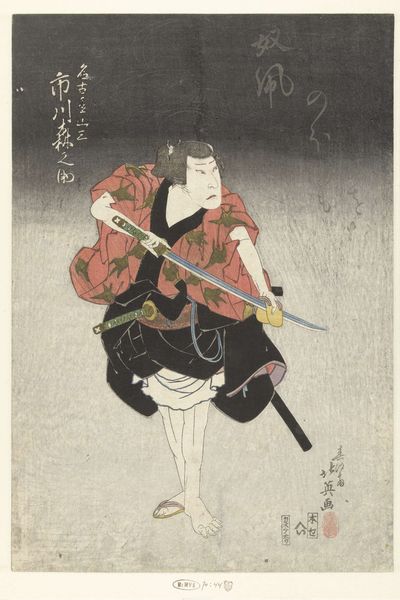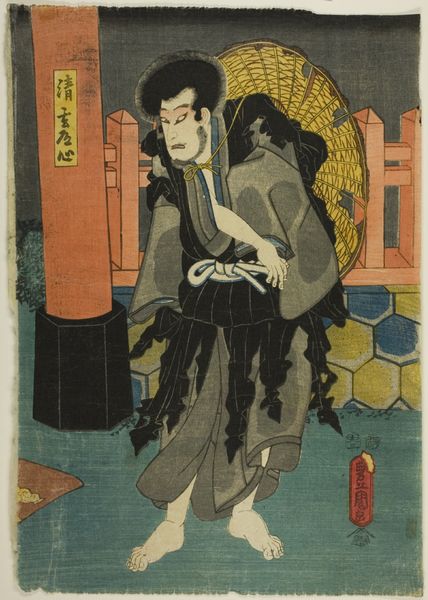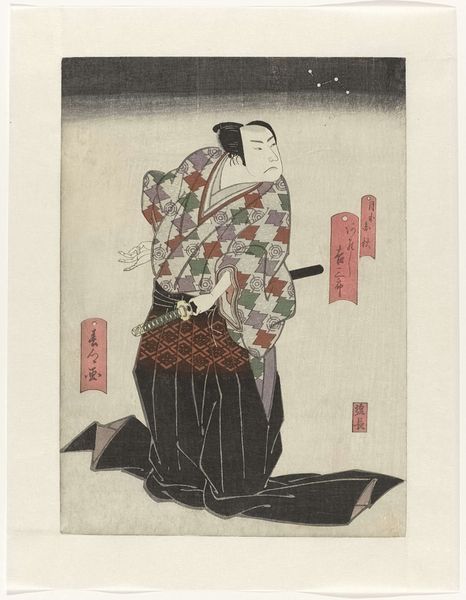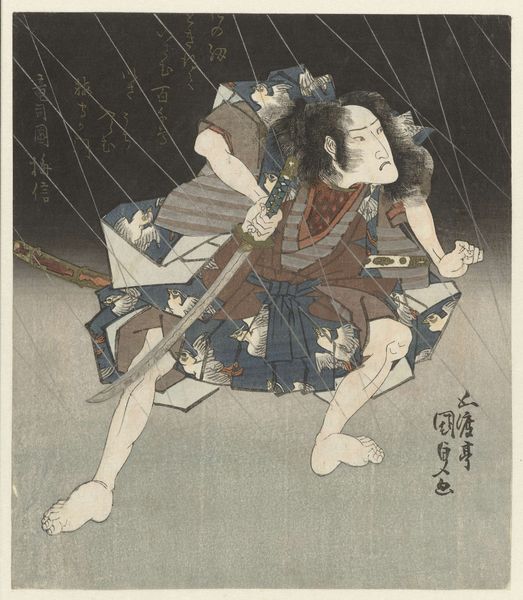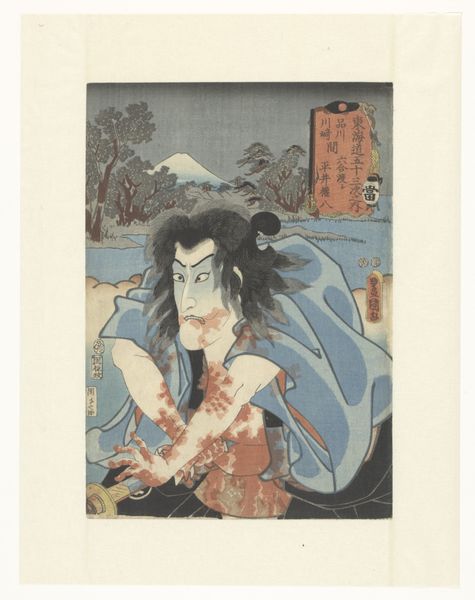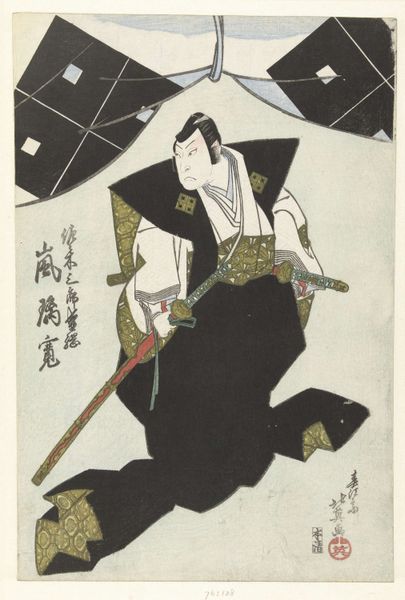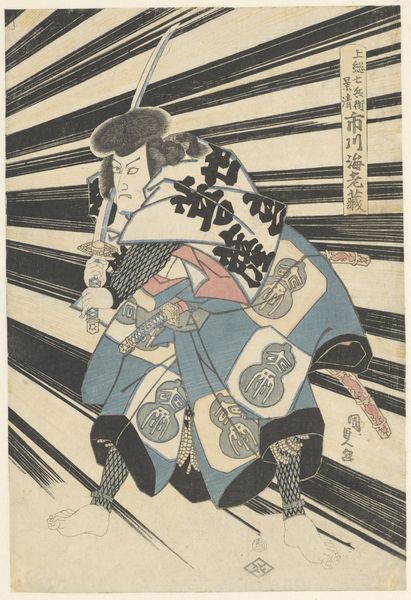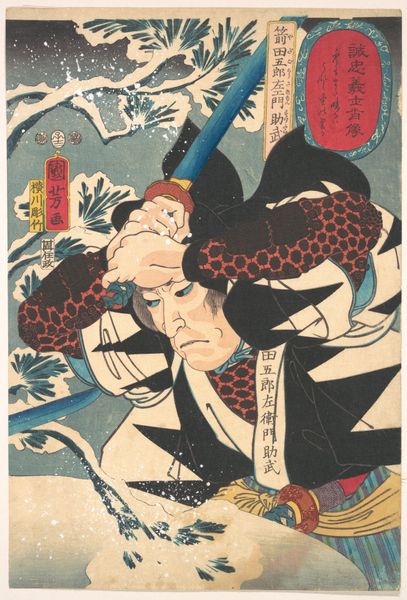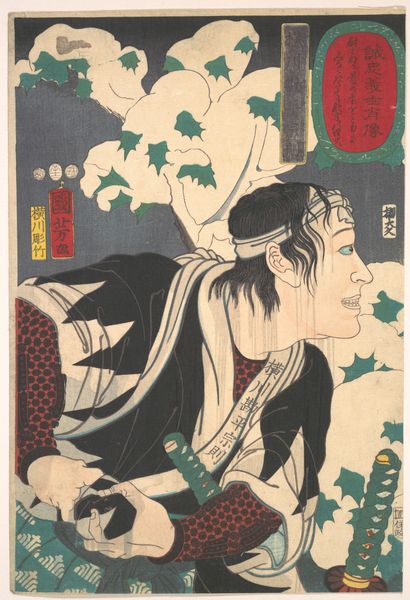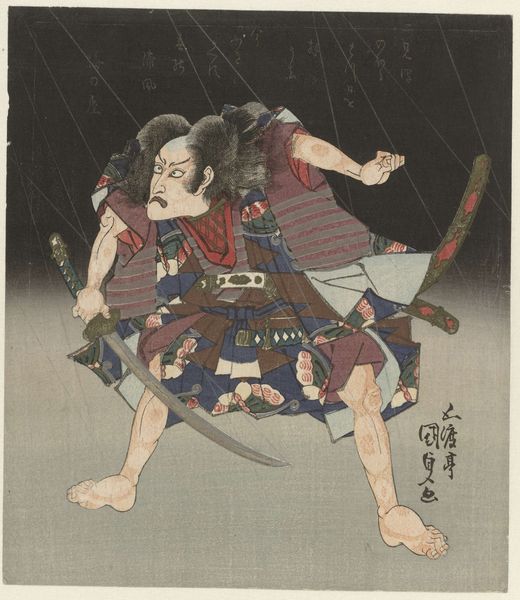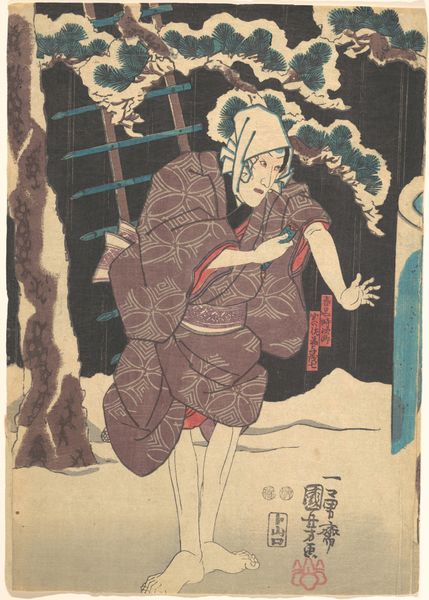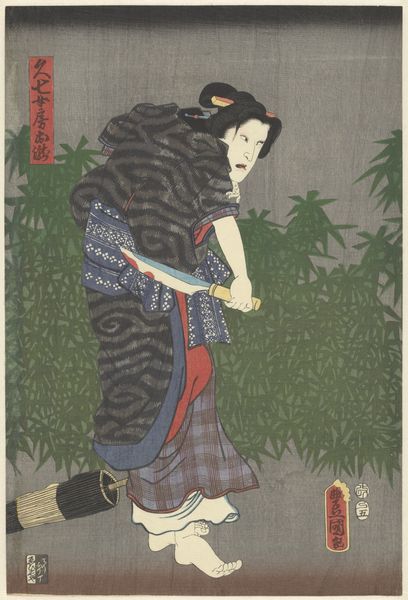
print, woodblock-print
# print
#
ukiyo-e
#
figuration
#
woodblock-print
#
line
Dimensions: height mm, width mm
Copyright: Rijks Museum: Open Domain
Curator: This is "Nakamura Utaemon IV als Ono Sadakurô," a woodblock print crafted around 1838 by Gochôtei Sadamasu. Editor: Immediately striking. There’s a tension—a barely contained energy. The diagonals of the rain, the sword—everything pushes outward. It's wonderfully theatrical. Curator: Theater informs so much of ukiyo-e, doesn't it? This portrays Nakamura Utaemon IV, a celebrated kabuki actor, in the role of Ono Sadakurô. Consider how the artist captures not just a likeness, but a persona laden with cultural weight. Editor: Absolutely. And how this image then circulates within a particular socio-political context. Ukiyo-e weren’t just pretty pictures; they played a part in constructing celebrity and public identity. Think about the rising merchant class and their hunger for representations of popular culture. Curator: Exactly! And note the deliberate use of line, so typical of Japanese prints— it creates outlines but also defines depth, or its lack thereof, reinforcing a symbolic, rather than illusionistic, space. Look, for example, at how line is used to suggest falling rain. The mind fills in so much. Editor: You’re right about that directness. I find it interesting that we can instantly read the situation despite a lack of perspectival realism. There's the fierce character, the stage setting implied, the atmospheric weather… a complex narrative, told so efficiently. And the palette, though restrained, punctuates the key areas. The face, the symbolic text. Curator: Speaking of symbols, examine the clouds. Are they mere atmosphere, or something more? Clouds often signify change, impermanence... even disruption, which links them thematically with the image of the swordsman. Editor: And the presence of the sword – more than just a theatrical prop, right? In this case, what kind of statement might the artist be making? Curator: Given that it represents a key cultural figure portraying a key role, I imagine that would also carry complex weight! The sword itself might carry an ambivalent meaning: authority and status but also disruption. Editor: So well observed. It shows the depth behind what might be understood simplistically as an entertaining commercial piece. Curator: Indeed. We’ve merely scratched the surface!
Comments
No comments
Be the first to comment and join the conversation on the ultimate creative platform.
